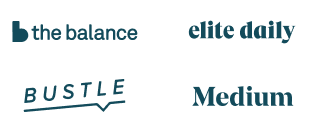- Featured in:
-


Find out what is the best resume for you in our Ultimate Resume Format Guide.
Additional Teaching Resume Samples
Lab Teaching Assistant Resume Samples
No results found
0-5 years of experience
- Instructed an Upper Division Level Material Processing Lab of 12+ students four times a week.
- Organized and directed 10 different labs relating to Material Science and Material Processing.
- Evaluated assignments and exams from 70+ students and provided fair assessment.
- Provided detailed explanation on processes that were demonstrated in lab experiments.
- Demonstrated new processes to students including: sand casting, plastic injection molding, carbon fiber
- Conducted 5 ASTM standardized test processes that are currently used in industry.
0-5 years of experience
Assisted in instructing students in Chemistry 201
- Prepared reagents of various kinds for lab experiments to be conducted by students
- Administered Tests, Assignments, and Grading
- Planned and Lead multiple day backpacking trips with club members
- Organized intra-club activities and social events
- Promoted fundraising for the Outdoors Club
0-5 years of experience
- Collaborated with Biology faculty member, teaching new students the expectations and objectives of course material and the proper use of lab equipment.
- Aided staff in the preparation of laboratory specimens, dilutions, and equipment, restocking the lab when necessary and helped maintain cleanliness.
- Conducted proper waste disposal protocol and showed students how to do the same.
- Community Education Outreach (CEO) at Intervention Community Corrections Services (ICCS), Lakewood. CO.
- Regis University Compassion by the Book Chapter (Club)
0-5 years of experience
- Lab teaching assistant for ‘Power Systems and Fundamentals’, ‘Energy Conversion’, and ‘Power Electronics II’
- Assisted students with proper use of high voltage electrical lab equipment and components
- Created lab instructions and graded lab reports
0-5 years of experience
- Supervises 24 students at a time to ensure their adherence to appropriate laboratory safety procedures and techniques
- Instructs students on essential analytical hardware
- Coordinates pre-lab preparation to establish an efficient working environment
0-5 years of experience
- Teaching nature physics using lab experiments for 2 sections with a total of 32 students.
- Managing lab equipment such as Oscilloscopes, multimeters, and others.
- Help design lab experiment manuals and grade lab reports.




